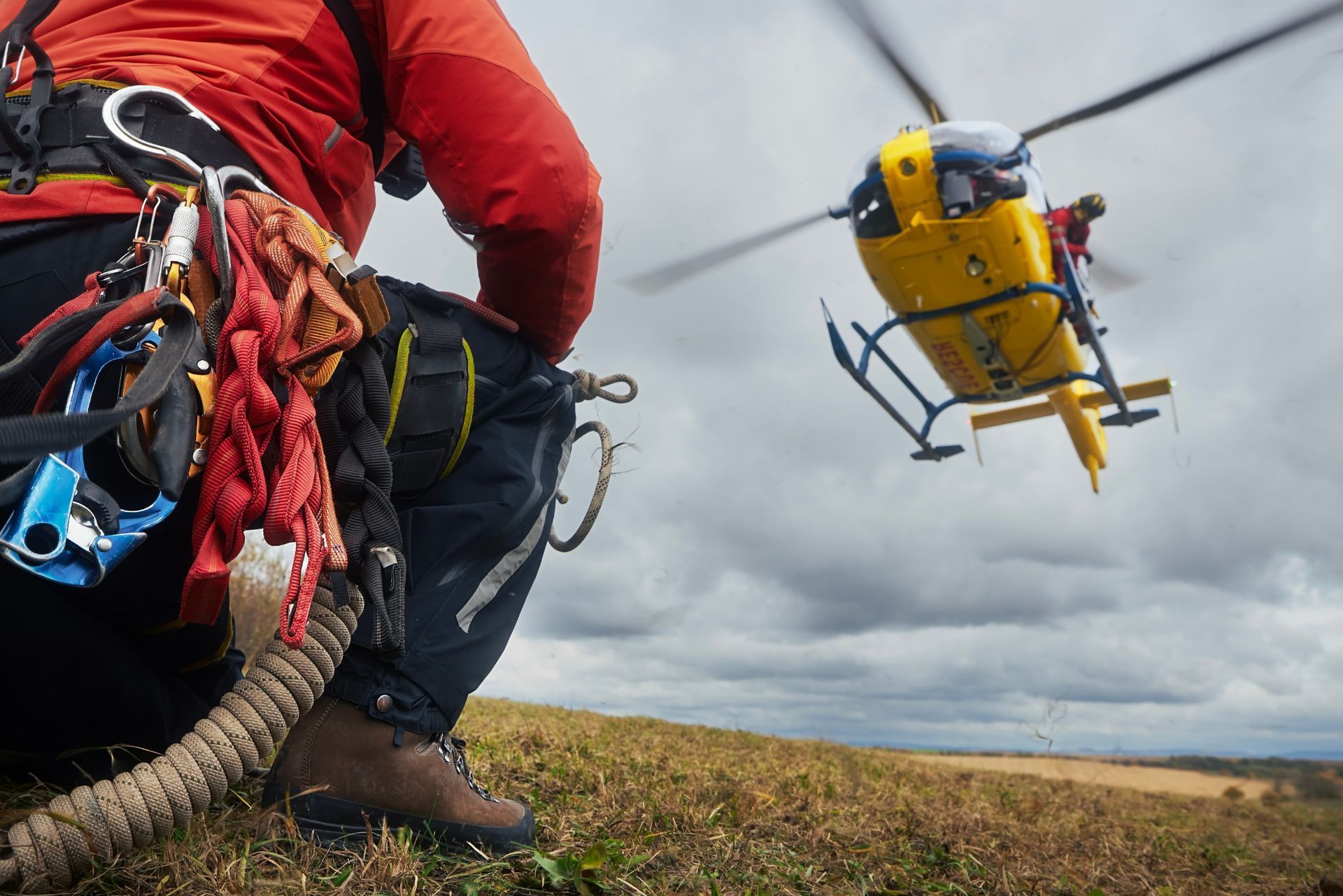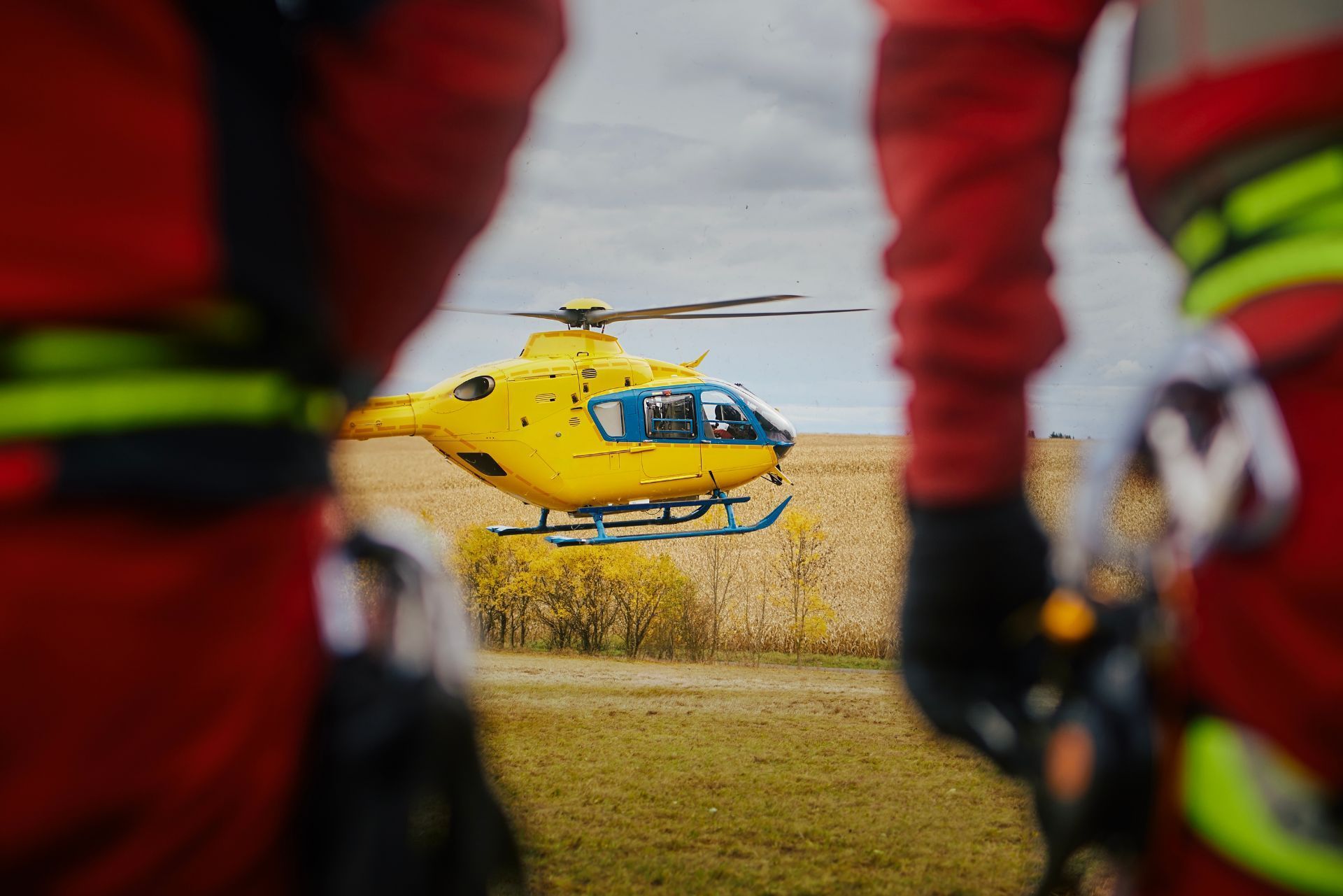Top 3 Recommended Policies

Operating in the oil, gas, and energy sectors often means working in remote, challenging environments where access to immediate medical care is limited. This makes medical evacuation (medevac) insurance an essential component of risk management for businesses in these industries. Understanding the nuances of medevac insurance, why it’s crucial, and how it integrates with broader safety and compliance strategies can help companies protect their workforce and bottom line effectively.
In this comprehensive guide, we will explore the key aspects of medevac insurance tailored for oil, gas, and energy businesses, supported by recent studies and expert insights. Whether you’re a safety manager, insurance professional, or business owner, this article will provide valuable knowledge to navigate this complex but vital area.
Why Medevac Insurance is Critical for Offshore Oil and Gas Operations
Medical evacuations in offshore oil and gas facilities are not just emergencies—they are complex logistical challenges that come with significant costs and risks. A study conducted in the Gulf of Thailand revealed that over a 36-month period, there were 416 medical evacuations, with a striking 84.13% of these due to illness rather than injury (pubmed.ncbi.nlm.nih.gov).
This statistic highlights an important aspect often overlooked: the majority of medevacs are triggered by non-occupational illnesses, such as chest pain, which was identified as the most common reason in another study where 77% of evacuations were for non-occupational medical issues (ishn.com). These findings underscore the necessity for comprehensive medevac insurance that covers a broad spectrum of medical emergencies, not just workplace injuries.
Given the remote locations of offshore platforms and rigs, medical evacuation is inherently risky and expensive. Dr. Donald P. Thibodaux, an expert in occupational health, emphasizes that "medevacs are costly, and the remote locations of the facilities make patient transport inherently more risky" (ishn.com). This reality makes insurance coverage indispensable, not only to manage financial exposure but also to ensure that rapid, safe medical transport is available when needed.
Moreover, the logistics of medevac operations can be incredibly complicated. Weather conditions, sea state, and the availability of helicopters or boats can all impact the speed and safety of an evacuation. For instance, adverse weather can delay transport, which in turn can exacerbate a medical condition. This unpredictability necessitates a robust insurance plan that can accommodate the unique challenges of offshore operations, ensuring that companies are prepared for any eventuality. Furthermore, the psychological aspect of working in such isolated environments can lead to increased stress and anxiety among workers, potentially leading to more frequent medical issues that require evacuation.
In addition to the immediate medical concerns, the implications of a medevac extend beyond the individual patient. Each evacuation can
disrupt operations, lead to financial losses, and impact crew morale. Companies must not only consider the cost of the evacuation itself but also the potential downtime and the ripple effect it can have on productivity. As such, investing in comprehensive medevac insurance is not merely a regulatory requirement; it is a strategic decision that can safeguard the well-being of employees and the overall operational integrity of offshore oil and gas ventures.

Understanding the Scope and Limitations of Medical Evacuations
While medevac insurance is vital, it’s important to understand the nature of medical evacuations in the offshore industry. Research shows that approximately 12.1% of offshore workers have required medical evacuation at some point during their careers, often due to illness or injury (selfcarejournal.com).
However, a retrospective review of medical evacuations found that 60.1% of these events were either unpreventable or difficult to prevent (pubmed.ncbi.nlm.nih.gov). This highlights the inherent unpredictability of medical emergencies in offshore environments and the critical need for insurance policies that are flexible and comprehensive enough to cover a wide range of scenarios.
Moreover, companies must recognize that while preventive measures and onsite medical facilities are essential, they cannot eliminate all risks. Therefore, medevac insurance acts as a crucial safety net, ensuring that workers receive timely medical attention without causing undue financial strain on the company.
In addition to the unpredictability of medical emergencies, the logistics of offshore evacuations can be complex and challenging. The remote locations of many offshore platforms mean that access to medical facilities is often limited, necessitating swift and efficient evacuation procedures. Helicopters are commonly used for these operations, and their availability can be influenced by weather conditions, mechanical issues, or other operational constraints. This underscores the importance of having a well-coordinated evacuation plan that includes not only insurance coverage but also established protocols for rapid response in emergencies.
Furthermore, the psychological impact of medical evacuations on offshore workers should not be overlooked. The stress and anxiety associated with potential medical emergencies can affect the overall morale and productivity of the workforce. Companies that prioritize mental health support and provide clear communication regarding evacuation procedures can foster a safer and more supportive work environment. This holistic approach not only enhances the well-being of employees but also contributes to a culture of safety that is essential in high-risk industries like offshore oil and gas.
How Medevac Insurance Fits Into Offshore Risk Management and Compliance
Beyond immediate medical response, medevac insurance plays a strategic role in broader risk management frameworks. Effective medevac plans help companies comply with legal and regulatory requirements, which can vary significantly across jurisdictions. Clarity Employee Benefits highlights that "effective medevac plans ensure companies are compliant with these legal and regulatory requirements, avoiding hefty fines and potential legal repercussions" (clarity.africa).
Non-compliance can lead to severe penalties and operational disruptions, making insurance coverage not just a protective measure but a business imperative. Additionally, having a robust medevac insurance policy can improve workforce morale and retention by demonstrating a company’s commitment to employee safety and well-being.
Incorporating medevac insurance into an integrated health and safety program also supports emergency preparedness. It ensures that evacuation procedures are well-defined and that all stakeholders—from on-site medical teams to insurance providers—are coordinated efficiently during a crisis. This level of preparedness not only minimizes the chaos that can ensue during an emergency but also instills confidence in employees, knowing that their health and safety are prioritized.
Moreover, the geographical and operational challenges faced by offshore workers necessitate a tailored approach to medevac insurance. Companies often operate in remote locations where access to emergency medical services can be limited. By investing in specialized medevac coverage, businesses can ensure that they have rapid access to advanced medical care, regardless of their location. This not only enhances the safety net for employees but also aligns with best practices in risk management, as it allows companies to mitigate potential liabilities associated with workplace injuries or health emergencies.
Furthermore, the integration of technology in medevac planning has revolutionized how companies approach emergency situations. The use of real-time tracking systems and telemedicine can facilitate quicker decision-making and more efficient evacuations. By leveraging these technological advancements, companies can enhance their medevac strategies, ensuring that medical teams are equipped with the necessary information to provide immediate care upon arrival. This proactive stance not only safeguards employees but also reflects a company’s dedication to innovation and excellence in health and safety management.
The Growing Offshore Insurance Market and Its Impact on Medevac Coverage
The offshore oil and gas insurance market is evolving rapidly, with casualty insurance projected to reach $12 billion globally by 2030, growing at a compound annual growth rate (CAGR) of 9.1% between 2025 and 2030 (newstrail.com). This growth reflects increasing recognition of the risks involved and the demand for specialized insurance products, including medevac coverage.
However, insurers are becoming more selective, especially for higher-risk offshore exploration projects. Premiums are rising, and coverage terms are tightening as insurers seek to manage their exposure more carefully (suresafeguard.com). This trend means that oil and gas companies must be proactive in demonstrating strong safety protocols and risk mitigation strategies to secure favorable insurance terms.
Understanding these market dynamics is crucial for businesses when negotiating medevac insurance policies. Companies that can show comprehensive health and safety management, including preventive measures and emergency response plans, are more likely to benefit from competitive premiums and broader coverage.
Moreover, the increasing complexity of offshore operations, coupled with the heightened regulatory scrutiny, necessitates that companies not only invest in advanced technology but also in training their personnel. Enhanced training programs that focus on emergency response, first aid, and evacuation procedures can significantly improve a company's standing with insurers. Insurers are more inclined to offer favorable terms to companies that can demonstrate a commitment to safety through rigorous training and preparedness.
Additionally, the geographical diversity of offshore drilling sites adds another layer of complexity to medevac coverage. Different regions may have varying regulations and logistical challenges that can affect response times and the availability of medical resources. Companies operating in remote areas must ensure they have tailored medevac plans that account for local conditions, such as weather patterns and access to medical facilities. By addressing these unique challenges, businesses can further enhance their risk profiles and potentially negotiate better insurance terms.

Key Considerations When Selecting Medevac Insurance
Choosing the right medevac insurance involves several important factors. First, coverage must be tailored to the unique risks of offshore and remote operations, including rapid evacuation capabilities for both occupational injuries and non-occupational illnesses. Given that a significant portion of medevacs are due to illnesses such as chest pain, policies should not be limited to workplace accidents alone. This is particularly crucial in environments where access to immediate medical care is limited, and the time taken to reach a medical facility can be a matter of life and death. Thus, understanding the specific medical risks associated with the operational environment is essential for ensuring adequate protection.
Secondly, companies should evaluate the insurer’s network and capabilities. The ability to coordinate complex evacuations involving helicopters, fixed-wing aircraft, and medical personnel is essential. The insurer’s experience with offshore environments and their responsiveness during emergencies can make a critical difference in outcomes. Furthermore, it is beneficial to investigate the insurer's partnerships with local healthcare facilities and their ability to provide seamless transitions from air transport to hospital care. This network can significantly enhance the quality of care received during a medevac, ensuring that patients are stabilized and treated promptly upon arrival at medical facilities.
Finally, it’s important to consider the financial aspects, including premium costs,
deductibles, and limits of liability. With insurers tightening underwriting standards, companies must balance cost with comprehensive coverage to avoid gaps that could leave workers vulnerable. Additionally, organizations should explore the potential for customized plans that cater specifically to their operational needs, as some insurers may offer flexible options that can adjust coverage limits based on the nature of the work being performed. This adaptability can provide peace of mind, knowing that the insurance plan evolves alongside the company’s operational demands.
Conclusion: Protecting People and Business Through Comprehensive Medevac Insurance
Medevac insurance is a vital safeguard for oil, gas, and energy businesses operating in remote and hazardous environments. With the majority of medical evacuations stemming from illnesses rather than injuries, and the inherent risks and costs involved in offshore medevacs, having robust insurance coverage is indispensable.
As the offshore insurance market grows and evolves, companies must stay informed about industry trends, regulatory requirements, and best practices in emergency medical response. Investing in comprehensive medevac insurance not only protects employees but also ensures business continuity and regulatory compliance.
Ultimately, medevac insurance is more than just a policy—it’s a critical component of a company’s commitment to health, safety, and operational resilience in one of the world’s most challenging industries.
Contact Us
Phone
Location
9595 Six Pines Dr, Suite 8210, The Woodlands, TX 77380

